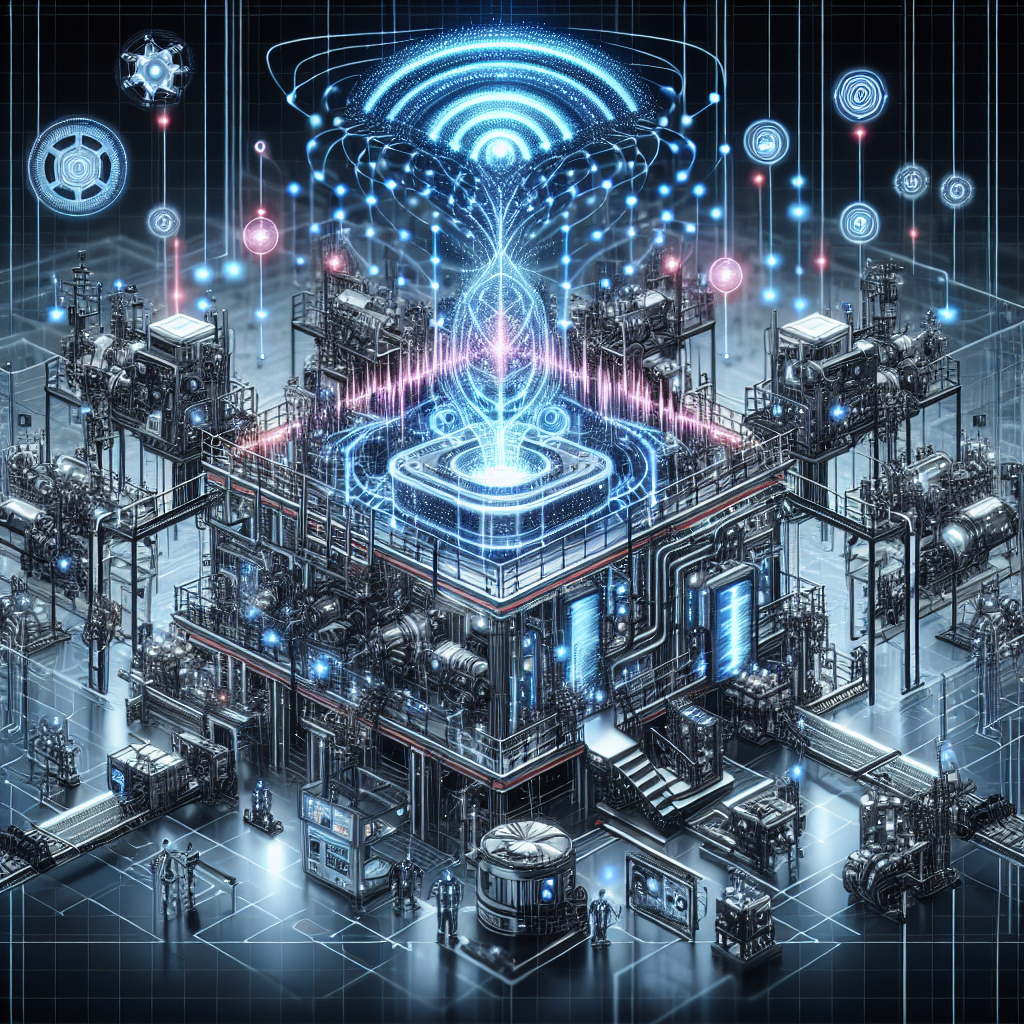In today’s fast-paced manufacturing environment, real-time monitoring and control are essential for ensuring efficiency, productivity, and quality in production processes. With the advancement of technology, artificial intelligence (AI) has emerged as a powerful tool for enabling real-time monitoring and control in manufacturing operations. AI can analyze large amounts of data, identify patterns, and make decisions in real-time, helping manufacturers optimize their processes, reduce downtime, and improve overall performance.
One of the key benefits of using AI for real-time monitoring and control in manufacturing is the ability to predict and prevent equipment failures before they occur. By analyzing data from sensors and other sources, AI can detect anomalies and patterns that indicate potential issues with machinery or equipment. This proactive approach allows manufacturers to take preventive measures, such as scheduling maintenance or replacing parts, before a breakdown occurs, minimizing downtime and reducing costly repairs.
AI can also optimize production processes by making real-time adjustments to parameters such as temperature, pressure, and speed. By continuously monitoring data and analyzing performance metrics, AI can identify opportunities for improvement and make adjustments on the fly to maximize efficiency and minimize waste. This dynamic approach to process optimization can lead to significant cost savings and improved product quality.
In addition to monitoring and control, AI can also be used for predictive maintenance, quality control, and inventory management in manufacturing. By analyzing historical data and using machine learning algorithms, AI can predict when maintenance is needed, identify defects in products, and optimize inventory levels to prevent shortages or overstocking. These applications of AI can help manufacturers streamline their operations, reduce costs, and increase customer satisfaction.
One example of AI in action in manufacturing is predictive maintenance. By analyzing data from sensors and equipment, AI can predict when a machine is likely to fail and alert operators to take preventive action. This proactive approach to maintenance can help manufacturers avoid costly downtime and repairs, as well as extend the lifespan of their equipment.
Another example is quality control. AI can analyze images of products on the production line to identify defects or deviations from specifications. By automating the inspection process, manufacturers can ensure that only high-quality products are shipped to customers, reducing the risk of recalls and customer complaints.
Inventory management is another area where AI can make a significant impact. By analyzing historical sales data, market trends, and other factors, AI can optimize inventory levels to prevent shortages or overstocking. This can help manufacturers reduce carrying costs, improve cash flow, and respond more quickly to changes in demand.
Overall, the use of AI for real-time monitoring and control in manufacturing can provide numerous benefits, including improved efficiency, reduced downtime, increased productivity, and enhanced product quality. By harnessing the power of AI, manufacturers can stay competitive in today’s fast-paced global marketplace and meet the demands of customers for high-quality products delivered on time.
FAQs:
1. How does AI gather data for real-time monitoring in manufacturing?
AI gathers data from various sources, including sensors, equipment, production systems, and other sources. This data is then analyzed using machine learning algorithms to identify patterns, anomalies, and trends that can inform real-time monitoring and control decisions.
2. What are the key benefits of using AI for real-time monitoring and control in manufacturing?
Some key benefits of using AI in manufacturing include predictive maintenance, process optimization, quality control, inventory management, and improved efficiency. By leveraging AI, manufacturers can reduce downtime, prevent equipment failures, enhance product quality, and streamline operations.
3. What are some examples of AI applications in manufacturing?
Some examples of AI applications in manufacturing include predictive maintenance, quality control, inventory management, process optimization, and supply chain management. These applications can help manufacturers improve efficiency, reduce costs, and deliver high-quality products to customers.
4. How can manufacturers implement AI for real-time monitoring and control?
Manufacturers can implement AI for real-time monitoring and control by investing in sensors, data collection systems, and AI software. They can also train employees on how to use AI tools and integrate them into existing production processes to improve efficiency and performance.
5. What are the challenges of using AI for real-time monitoring and control in manufacturing?
Some challenges of using AI in manufacturing include data quality issues, integration with existing systems, and the need for skilled personnel to operate AI tools. Manufacturers may also face resistance from employees who are not familiar with AI technology or hesitant to trust AI for critical decision-making.

